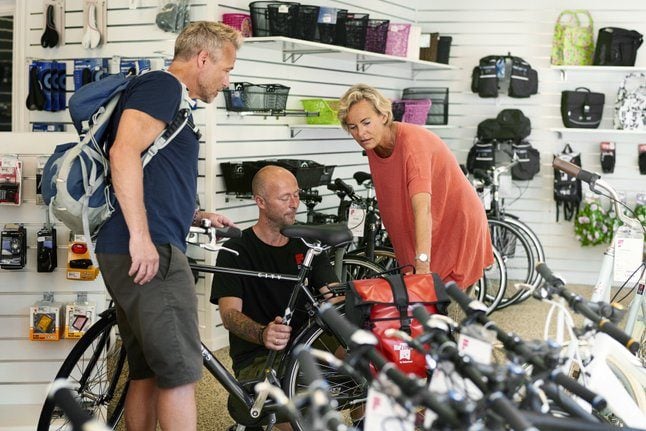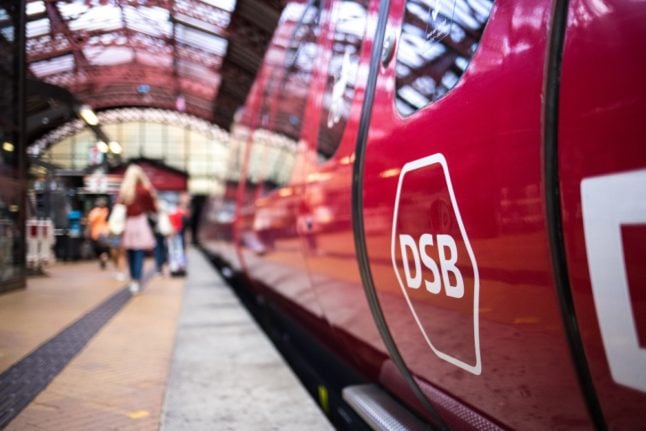What’s it like riding a bicycle in Denmark?
Danes ride fast. This is particularly the case in Copenhagen (and maybe in Aarhus) during the morning commute when cycle lanes can become like race tracks, so keep an eye out for people bombing past you in the outside lane.
It’s important to follow the rules. If you don’t people will tell you, so prepare to be told off.
“There’s nothing more aggressive than a Dane riding a bike,” complains one foreigner.
What bicycle etiquette and rules do I need to follow in Denmark?
You should ride your bicycle like you would ride a car, sticking to the right-hand side of both roads and cycle lanes, particularly if a cycle lane is two-way. If you are going fast, you should overtake slower cyclists on the outside, and then return to the slow lane to make way for even speedier riders.
Don’t drive on the pavement, the wrong way down a cycle lane, or the wrong side of the road. Danes hate this.
Don’t cycle alongside a friend having a chat.
Use hand signals. Holding your left hand up means that you are stopping. Sticking your right hand out means you are turning right. A hand to the left means a left turn.
Don’t talk on your phone while cycling. (You can get fined 1,000 kroner)
How do you get hold of a bike?
Denmark has been a cycling country for so long that its big cities have built up enormous reserves of 30-year-old bone-rattlers from Danish brands like Kildemoes, Everton, Centurion, and MBK, which are endlessly repaired and resold.
The advantage of buying one of these is that they’re much less likely to get stolen, and they’re so cheap that you can, like many Danes do, leave one chained up waiting in the city centre, and then commute in by train. The disadvantage is that it might not run that smoothly, and it certainly won’t look slick.
Den Blå Avisen, Denmark’s online auction site, is the traditional place to go for a second-hand bike. You can search by post number. Facebook Marketplace has obviously been taking away some of their business, as have the several Facebook groups where people sell used bikes, such as Buy a Bike Copenhagen, or Aarhus Bike Marketplace.
If you’re willing to pay a few hundred kroner extra, you can also buy decent second-hand bikes at one of the bike repair shops you find everywhere in big Danish cities. Perhaps the quickest and safest way to get a second-hand bike is to go to one of the slicker second-hand operators like Buddhabikes or the Baisekeli chain, although you’ll pay a bit more.
The auction house Lauritz sells bikes retrieved or seized by the Danish police.
If you want a new bike, you should expect to pay at least 5,000 kroner, and perhaps even double that if you’re looking for something special. Velohouse is a nice bike shop.
For those on a visit, you can rent bikes easily all over Denmark. Check out this map from Visit Denmark to see some of the more popular rental shops. In Copenhagen, Baisekeli’s rental arm seems popular.
The Dutch bicycle rental company Swapfies rents out sturdy Dutch bikes at reasonable monthly rates, which is a great alternative for people making short stays.
If you just need a bike for an hour or so, Donkey Republic has bikes all over Copenhagen and Aarhus. Just download the app.
How do I make sure a second-hand bike is not stolen?
It has been mandatory since 1942 for each bicycle sold in Denmark to have a unique identity number cut into its frame to prevent theft. When you’re buying a second-hand bicycle you should first take down the stelnummer or “frame number” and check on the Danish police’s stolen bike database to see if it has been reported stolen.
On DBA, it’s best to only do business with users who have validated their identity using their Nem-ID, as if the bike later turns out to be stolen it is then easy to identify and track down the seller. If they haven’t validated their identity, it’s a good indication that they’re up to no good.
How do I make sure my bike doesn’t get stolen?
You’ll hear foreigners in Denmark moan, but cycle theft in the country has been in steady decline for at least a decade, with around 40,000 reports of cycle theft in 2020, compared to well over 100,000 back in the mid-1990s.
The best way to avoid having your bike stolen is of course to invest in a sturdy lock, preferably two, and, if possible, not to leave your bike chained up outside overnight.
What do I do if it does get nicked?
You should report the theft to the police here, which will at least get the frame number on the stolen bikes register (even if police are unlikely to make much effort to find it).
Can I get my bike insured?
If you’ve splashed out on a half-decent cycle, you may want to insure it. Cycle insurance in Denmark is included as part of general household contents insurance. You may have to pay an additional supplement to get cover for an expensive bike, while if your bike only cost 500 kroner, that probably won’t be covered.



 Please whitelist us to continue reading.
Please whitelist us to continue reading.
In DK, the HUGE difference between riding a bike and driving a car is the LEFT TURN.
https://www.vejle.dk/welcome-to-vejle/getting-started-in-vejle/how-to-bike-in-denmark/
Wow! That’s a nice guide. Thanks for the link
And do not forget your bike lights!
You didn’t mention that most Danes completely ignore the rules of the road when they are on a bicycle. Stop at a red light and you maybe the only person waiting, everyone else will fly past you. I have been shouted at for getting in their way.
Which is quite weird because when on foot they will wait at a crossing for the green man even when the road is empty for miles in each direction.